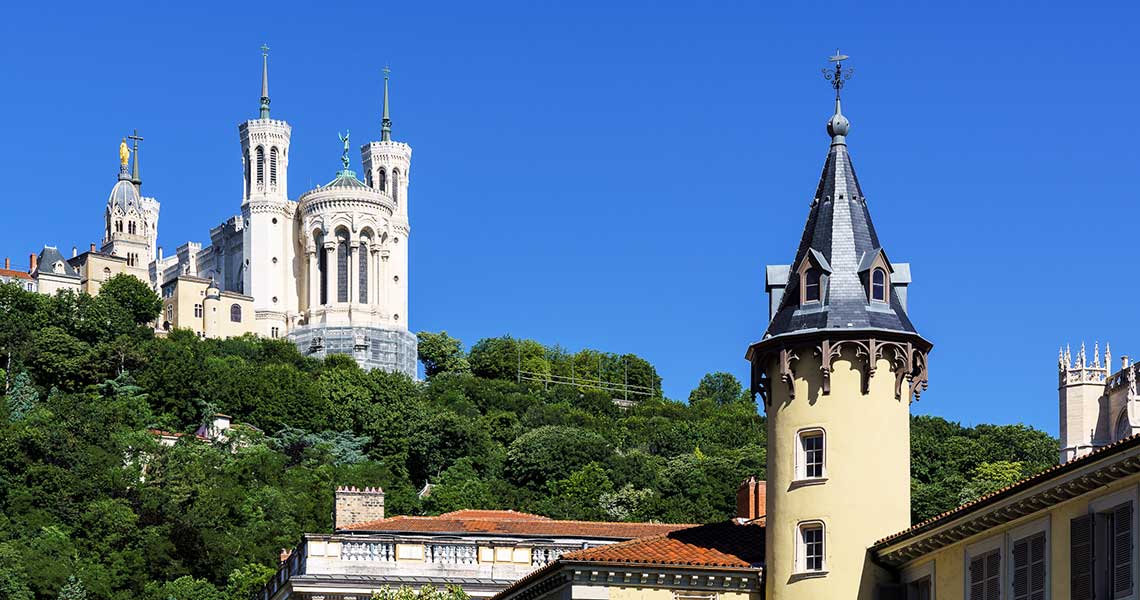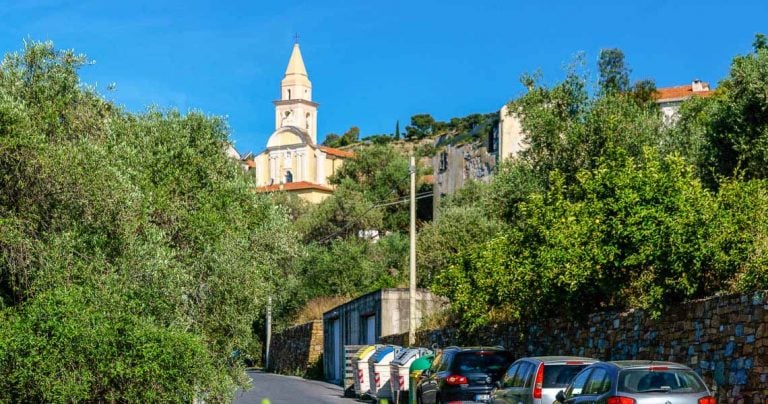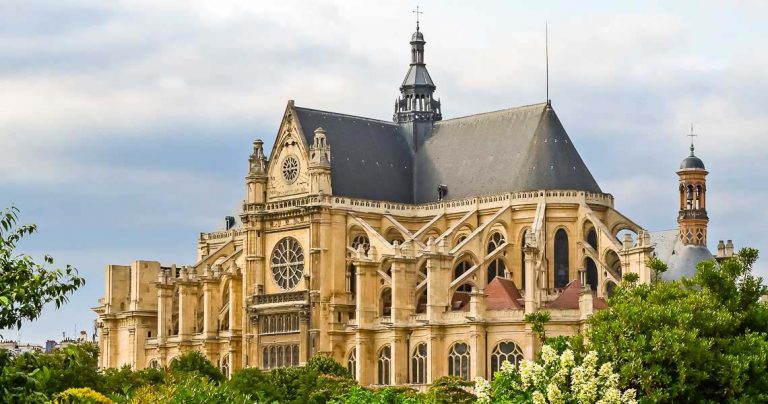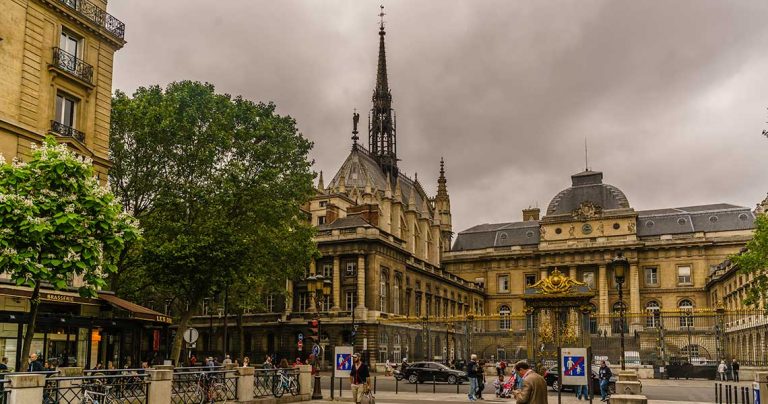Notre-Dame de Fourvière
When Ruth suggested that we visit the Notre-Dame de Fourvière basilica in Lyon, I felt a sense of foreboding. There are thousands of churches in France (over one thousand in Paris alone), and on the whole, they don’t much impress me. While they may have historical, cultural, religious and architectural significance, many are dark, drab and lifeless structures, full of the bodies of kings, queens, bishops and other notables of bygone eras. There is little that is uplifting or inspiring about them.
However, Notre-Dame de Fourvière is a notable exception. The first word I uttered after opening the door to the Basilica was, literally, WOW! Yes, this church has a WOW factor. Gilt, marble, stained glass and coloured mosaics cover virtually every surface. Vivid colours and complex patterns bombard the senses.
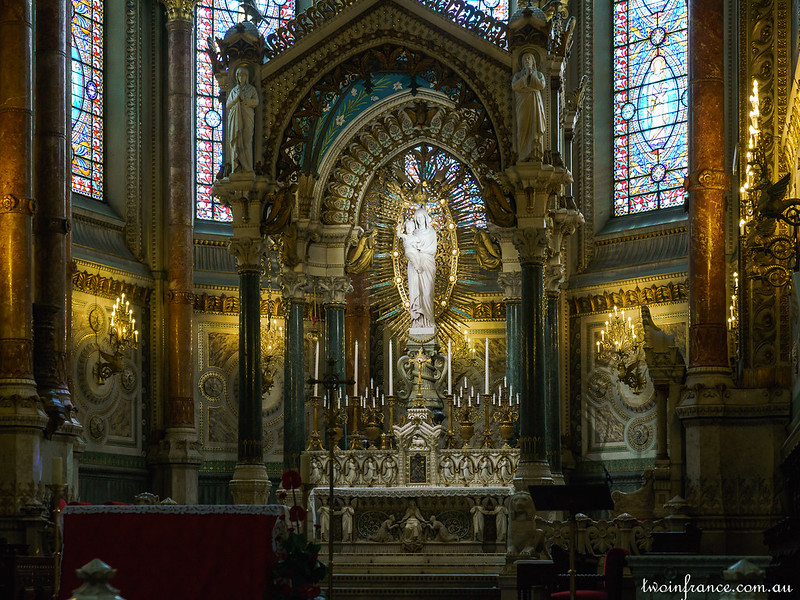
A mixture of Romanesque and Byzantine architecture, the Basilica is visible from almost anywhere in Lyon. The gleaming white exterior rises like a fortress on Fourvière Hill, with slender turrets on its four corners. The relatively plain exterior contrasts with the richly decorated interior.
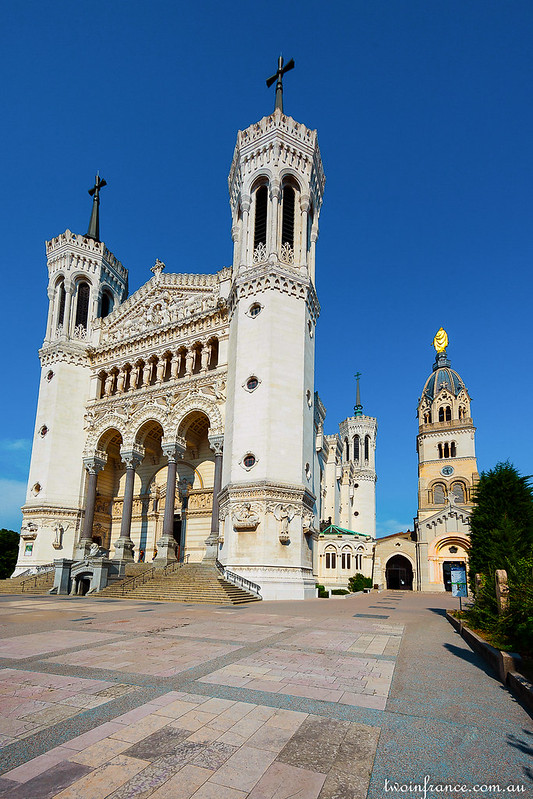
As basilicas go, Notre-Dame de Forvière is fairly young. Building only started in 1872, and it was not until October 5, 1986, that Pope John Paul II bestowed the title of ‘basilica’ on it during a visit there. Yet, it has become one of the major symbols of Lyon and attracts 2.5 million visitors each year.
The Basilica is actually two churches in one, one below the other. The high church is dominated by three domes and lit by six stained glass windows that provide light, highlighting a rich decor. The materials used for construction and decoration compete in quality and beauty, white Carrara marble, pink granite from Northern Italy, blue marble from Savoy, green onyx, silver and gold chips, wedding ebony and ivory.
Made up of three large naves and three pointed-arched bays, the entire upper church is supported by sixteen columns. Eight chapels are present, and the apse is lit thanks to seven high windows. On the sidewalls, six 50 square metre mosaic panels, by Charles Lameire and Georges Décote, illustrate on the left, Mary’s relationship to the Church, on the right, Mary’s relationship to France.
Beneath the main level is the Crypt, dedicated to Saint Joseph. Designed by Pierre Bossan, the symbolism is obvious. One moves from the darkness of the outside world, depicted by the crypt, into the light of the richly decorated interior of the Basilica.
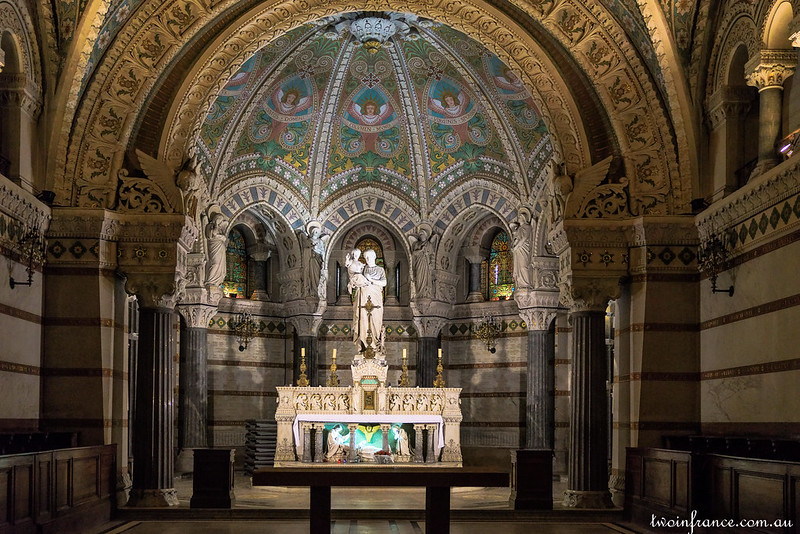
Adjoining the Basilica is the ancient Chapel of the Virgin Mary and a terrace that provides a panoramic view of the city of Lyon. You can have an even better view by climbing 287 steps to the Basilica observatory.
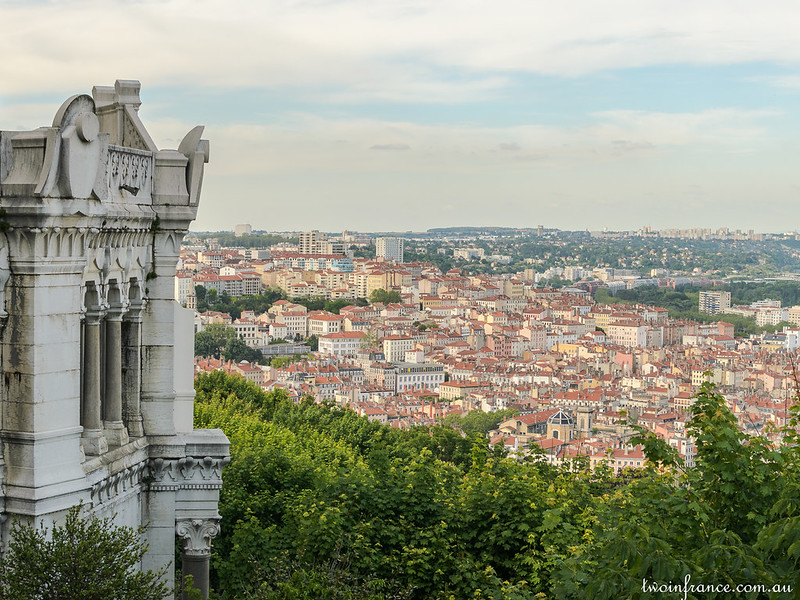
Nearby are the gardens of Rosaire, also designed by Bossan, and the pleasant Hauteurs Park.
Fourvière Hill was originally the location of the Roman Forum and a temple. As early as 1168, a Christian chapel was built on the hill, which had already become a Marian shrine by that time. The chapel was dedicated to the Virgin Mary and the medieval English Saint Thomas Becket (1118-70).
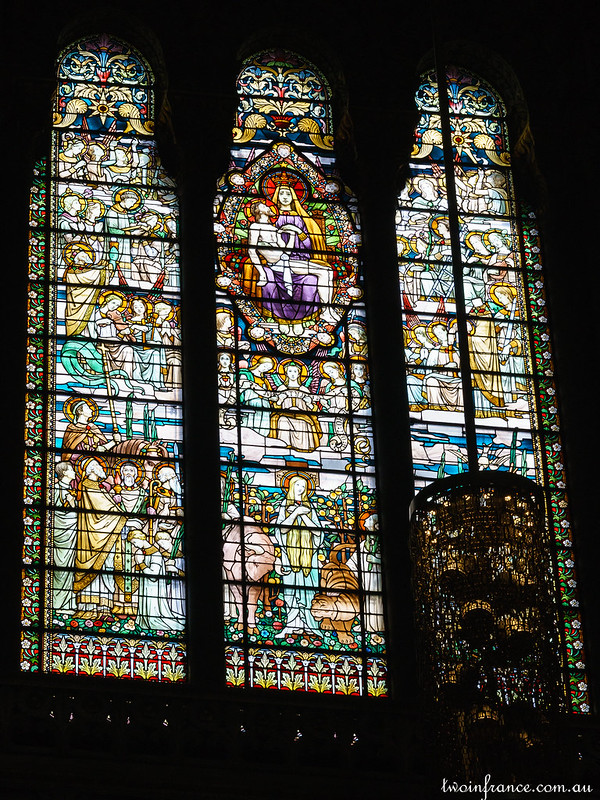
Its popularity as a place of pilgrimage increased significantly after Lyon’s preservation from the plague in 1643 was interpreted as an answer to the prayers of the city leaders.
The chapel and parts of the building have been rebuilt at different times over the centuries, the most recent major works being on December 8, 1852, when the ancient steeple was replaced by a tower surmounted by a golden statue of the Virgin Mary sculpted by Joseph-Hugues Fabisch.
Since that first evening, the people of Lyon have lit small candles every year in memory of the event. The tradition has been perpetuated, and torch-lit processions make their way up Fourvière from Saint-Jean Cathedral on December 8.
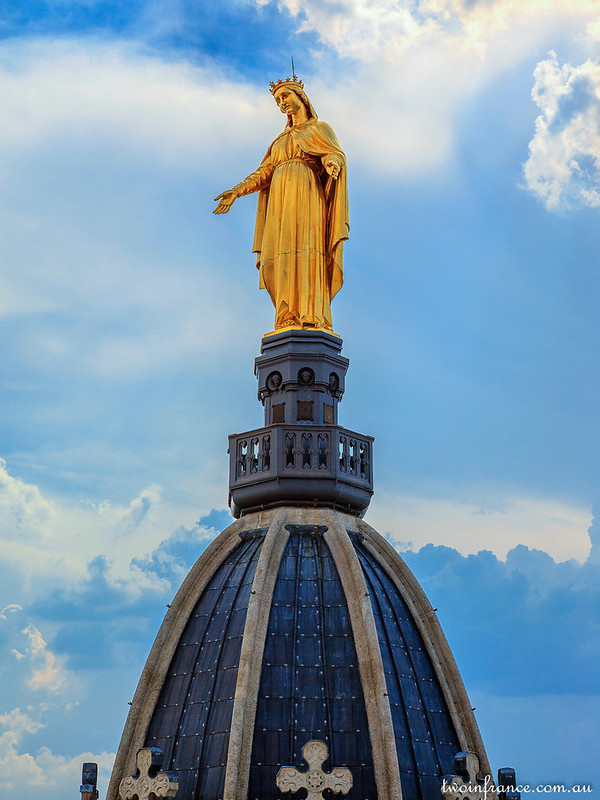
When the Franco-Prussian troops spared the city of Lyon during the war of 1870, the community again acknowledged the special blessings of Our Lady and committed to building the present Basilica alongside the ancient chapel.
At certain times, the public may access the Basilica’s north tower for a spectacular 180-degree view of Lyon and its suburbs. On a clear day, Mont Blanc, the highest point in Europe, can be seen in the distance.

Many paths lead to the Basilica. You can drive, but parking is limited. The hop-on-hop-off tourist bus stops outside and begins from Place Bellecour. By far, the most popular route is the Metro D line to Vieux Lyon, where you can begin your pilgrimage on foot. Or, take the Funiculaire de Fourvière, which leaves from the metro station. In funicular, you will be able to see the ancient ruins of the Roman Forum. And, if you feel up to it, return to Lyon via the gardens, a true haven of peace.
There are several guided tours of various aspects of the Basilica and its surroundings. Unfortunately, these are all in French and ticketed. Also, check the website for the health details required for your visit.
The Notre-Dame de Fourvière is a feast for the eyes and nourishment for the soul. it is a place where faith can be reborn. It is alive. It is uplifting and awe-inspiring.
Notre-Dame de Fourvière
8 Place de Fourvière, 69005 Lyon, France
+33 04 78 25 13 01
Every day 7.00 am-7.00 pm
Metro D to Vieux Lyon station and the funicular F2 to Fourvière
www.fourviere.org

